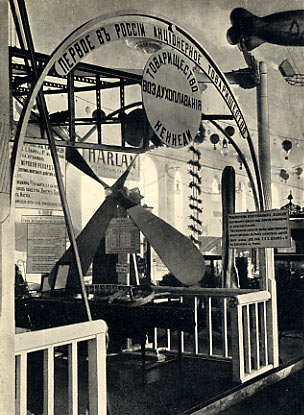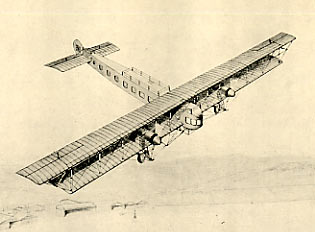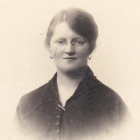Learn tips and techniques for implementing responsive websites - responsive means that your website has been programmed to aut0-fit on all devices.

- A Scotman in Russia
- The First Steps
- Russian Military Flying Schools
- The Imperial All Russia Aero Club
- General Baron Kulbars & Aviation
- The Imperial Russian Technical Society
- The Prototype of the Zeppelin
- Contruction, Aviators & Workmen
- Famous Russian Flying Men
- I.I. Sikorsky
- Foriegn Aviators in Russia
- Heir Fokker's Russian Lady Pilot
- Just Before the War
- Aerial Russia & the British Press
- Aviation & the Russian Press
- By Way of Conclusion

Chapter XIII - Just Before the War
In the summer of 1913, the Imperial All Russia Aero Club organised an important aviation week which immediately followed the military competitions. This meeting may, I think, be regarded as the most important aviation event that occurred in Russia up to the beginning of the war. The best Russian flying-men competed against a number of famous French aviators. On the Russian side, Sikorsky on his giant "Ilia Mourometz ", Yankovsky on a Sikorsky mono-plane; Alechnovitch on a small Sikorsky biplane, Raievsky on a Blenot "looper"; Jatsuk on a Farman biplane type No. 21; Agafonoff on the same type of biplane and also on a Hanriot monoplane; Yolk on a School Farman; and several military aviators on Nieuports, Deperdussins, and Moranes. On the French side were Poiree on a Farman biplane type No. 20, especially strengthened for looping; and Pegoud with two Bleriot, "loopers," one single-seater and one for carrying a passenger. Audemars, the famous Swiss pilot, took part in the military competition on his Morane, but he was unfortunately obliged to return to France before the subsequent aviation week began. The Russian pilot Gabavlinsky was Audemars's opponent in the competition, and the Swiss flyer afterwards said that he had never met a more dangerous competitor.

Above: Mr. Kennedy's stand at the 1st Petrograd International Aviation Exhibition, April, 1911.
During the aviation week, Poiree performed a series of the most amazing tricks on his Farman. He looped the loop. He banked at over ninety degrees when only fifty feet from the ground. He performed the tail dive, and a dozen other thrilling feats. He was particularly astonished at the pluck of the Russian ladies, who encouraged him daring performances while they were his passengers. If Poiree surprised the Russian people, he himself was certainly greatly surprised when he saw Sikorsky arrive in the aerodrome on his enormous giant. Mr. Pegoud was of course the attraction of the week, and he received a most flattering reception. He made many wonderful flights and with characteristic French courtesy he asserted that the charming manner in which he was received and the flattering tributes to him as "King of the Air" caused him to fly better than he had ever flown before. He met a considerable antagonist in young Yankovsky, who though he had never looped the loop before, after watching Pegoud, surprised the great Frenchman by reproducing his feats on the Sikorsky monoplane. Both Pegoud and Poiree received a great deal of money for their services. Pegoud from passenger flights alone made more than £200 a day. So successful indeed was his visit that Poirce remained in Russia permanently. He is now an officer attached to the Russian Flying Corps and has been decorated by the Czar for his fine work at the front.
In the spring of 1914, M. Laporte, the famous French pilot of the Voisin biplane, Type Militaire, went to Petrograd at the invitation of the Lebedeff Company and demonstrated to the War Office the capabilities of this particular machine. Laporte was a most accomplished airman and he beat the Russian duration record in his first flight, which lasted nine and a half hours. This French pilot also liked Russia so much that he has remained there and he is also now attached to the Russian Flying Corps at the from. Two other world-famous airmen have visited Russia. In 1913 Beaumont was invited by the Ministry of Marine to test some seaplanes on the Neva. He brought with him from France a flying-boat of the Done-Levecque type, with which he made one or two interesting flights. But the Ministry of Marine was not attracted and none of the flying-boats were ordered.
Brindejonc-de-Moulines flew from Paris to Petrograd in 1913 and this flight, of course, gave him considerable fame in the Russian capital. He made several exhibition flights in Petrograd which served as an admirable advertisement of the Gnome engine. He was the only foreign flying-man who ever arrived and departed from Russia by the air. 'The route of his return journey to France was from Petrograd to Riga, from Riga to Libau, from Libau to Stockholm, from Stockholm to Christiania, from Christiania to Copenhagen, and from there through Holland and France. Brindejone-de-Moulines has a greater reputation in Russia than any other French aviator, and he left many friends behind in my country. The war has of course put a stop to the visits of foreign flying-men, all of whom are busy in their own countries. It is interesting to note that while Germany and France were sending their best airmen to Russia and paying great attention to the development of aviation in that country) the English, who pride themselves on their sporting qualities, have never adventured over Russia's enormous forests, marshes, rivers, and lakes. where often a landing place cannot be found for hundreds of miles and where an aviator's capacity can be tested as it can be tested nowhere else.
The only British subject who has ever had the smallest connection with Russian aviation is the Scotsman Mr. Mackenzie-Kennedy, and for years the British colony In Petrograd regarded him as a highly eccentric person for concerning himself with aeroplanes instead of manufacturing cotton, importing herrings, or brewing beer. It is also interesting to remember that despite the thousands of Englishmen who visit Russia, the only British subject who has eyer flown in that country up to the outbreak of war was that same Scotsman. The English have certainly visited the Russian aerodromes during the aviation weeks, but Russia does think it extraordinary that her air should never have been traversed by her English friends. It is possible that British aviators may have flown in Russia since the war began, but I have no record of such happenings.

Above: The World's Largest Aeroplane.
The Russian airmen have, however, flown in England and Sikorsky himself has visited this country. With his characteristic modesty Sikorsky stayed in London for a whole week without attracting the smallest notice. At present there is a talented young Russian airman, Mr. Osipenko, staying in London and his talents are already widely recognised. I earnestly hope that one result of this book will be the creation of some real interest in Russian aviation. Before the war, Germany - had a greater attraction for the British aviator than Russia, the cradIe of the mighty giants, those aerial Dreadnoughts that are now Germany's nightmare.



